How to successfully road trip with your four-legged bestie this summer
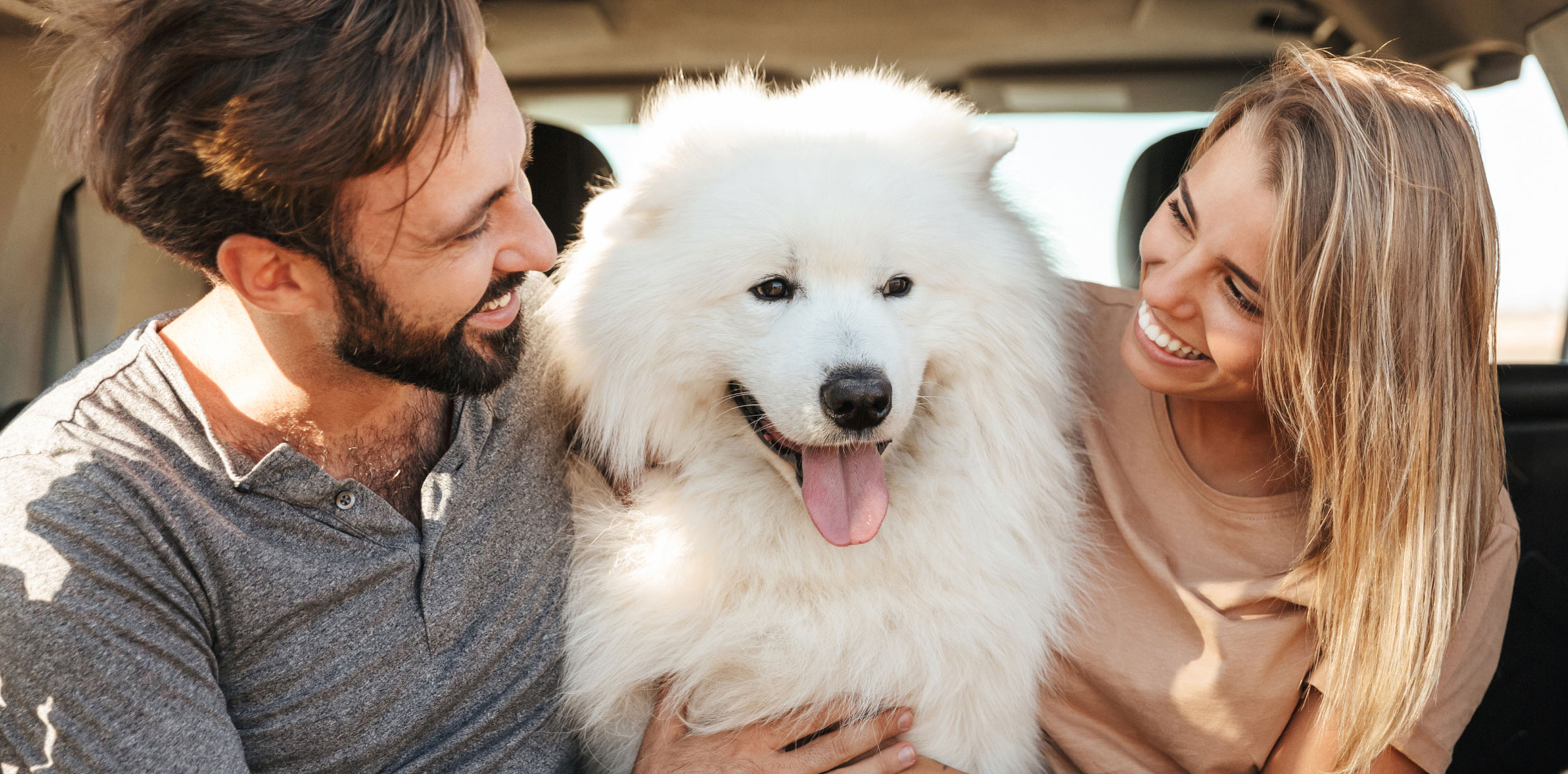
Travelling with pets gives us a chance to not only explore new places, but see the world through their eyes. We promise, their wholesome joy and excitement is 100% contagious.
For instance, you might be tired after a long day of driving, but an adorable dash of the zoomies (courtesy of your pup) will serve as an immediate pick-me-up — not to mention, a reminder that the destination is well worth the journey.
Sure, accidentally locking your keys in your car at a highway rest stop isn't the *best* way to kick off a BFF road trip. But watching your bestie wait patiently like the goodest girl in the whole wide world, while a nice stranger clicks open the lock with a coat hanger is the kind of bonding moment that makes travel with pets truly unforgettable.
If you're planning to head out on a trip this summer with your furry family member as co-pilot, here are some helpful tips and tricks to make sure the journey is enjoyable for both of you.
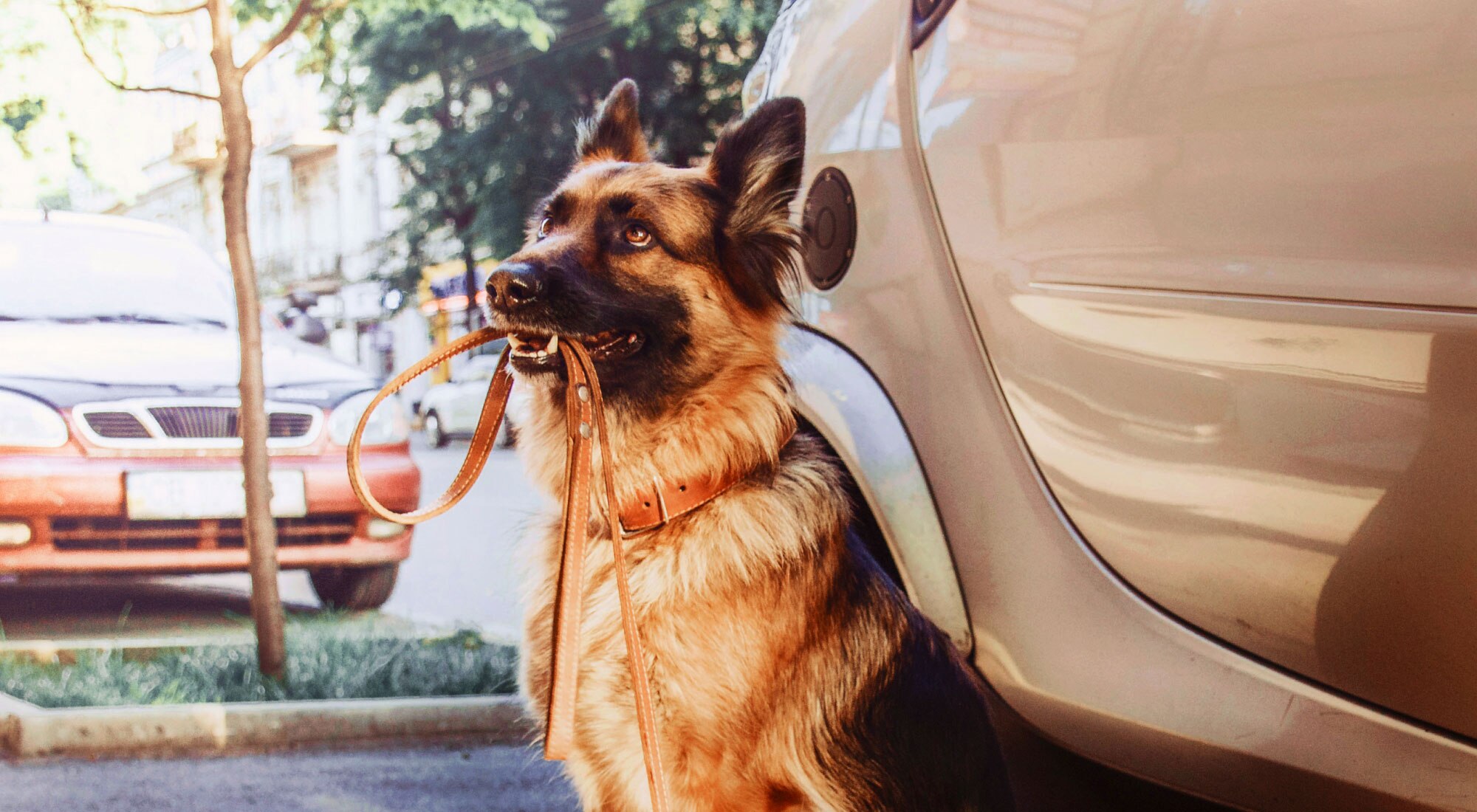
Hittin' the road
"I personally think that people worry too much about travelling with pets," says Amy Pike, manager of the Pet Valu store in Belle River, ON. "It's a lot easier than people expect," says Pike, who travels with three dogs on the regular.
"Honestly, there's no difference between travelling with your fur babies and your kids. In some respects it's actually easier. The dog doesn't want much other than to be with you, where kids can be a lot more high maintenance sometimes."
Think about it: has your dog ever complained about their tablet battery dying? Or criticized your road trip playlist?
Exactly.
Setting up your back seat for a road trip
If it's your dog's first time road tripping with you, you'll need to get a sense of how comfortable they are in the car. Turn your backseat into a space they can easily familiarize themselves with by introducing elements like a favourite blanket, toy, or their bed.
It's best to keep your dog in the backseat of a vehicle to keep him out of harm's reach if airbags were to deploy.
You can also purchase a dog restraint for seat belts to prevent your dog from roaming around the vehicle and creating distractions for you while driving.
If your doggo suffers from motion sickness, you will still want to stick to a normal feeding schedule.
Small dogs will also appreciate an elevated surface like a doggie booster seat that lets them look out the window.
"A lot of times the little guys can't see what's going on," Pike explains, "so that's why they get more excited when they feel the vehicle moving. If you can't see what's going on, it's going to make you edgy."
How to travel with your dog in a crate
If you are looking for a travel crate, measure your dog from the bottom of his feet to the top of his head, and from the tip of his nose to the tip of his tail. You want to pick a crate that allows him to move freely, turn around, and lay down with his legs extended. It should also be tall enough for your dog to sit up straight, or stand without his ears being bent by the top of the carrier.
It's a good idea to start getting your dog used to the crate about a month before travel. Leave it open in the living room and let your dog lay in it and explore it freely.
When your crate is installed in your vehicle, your dog is safest if you anchor the crate to the vehicle with a seat belt or tie-down.
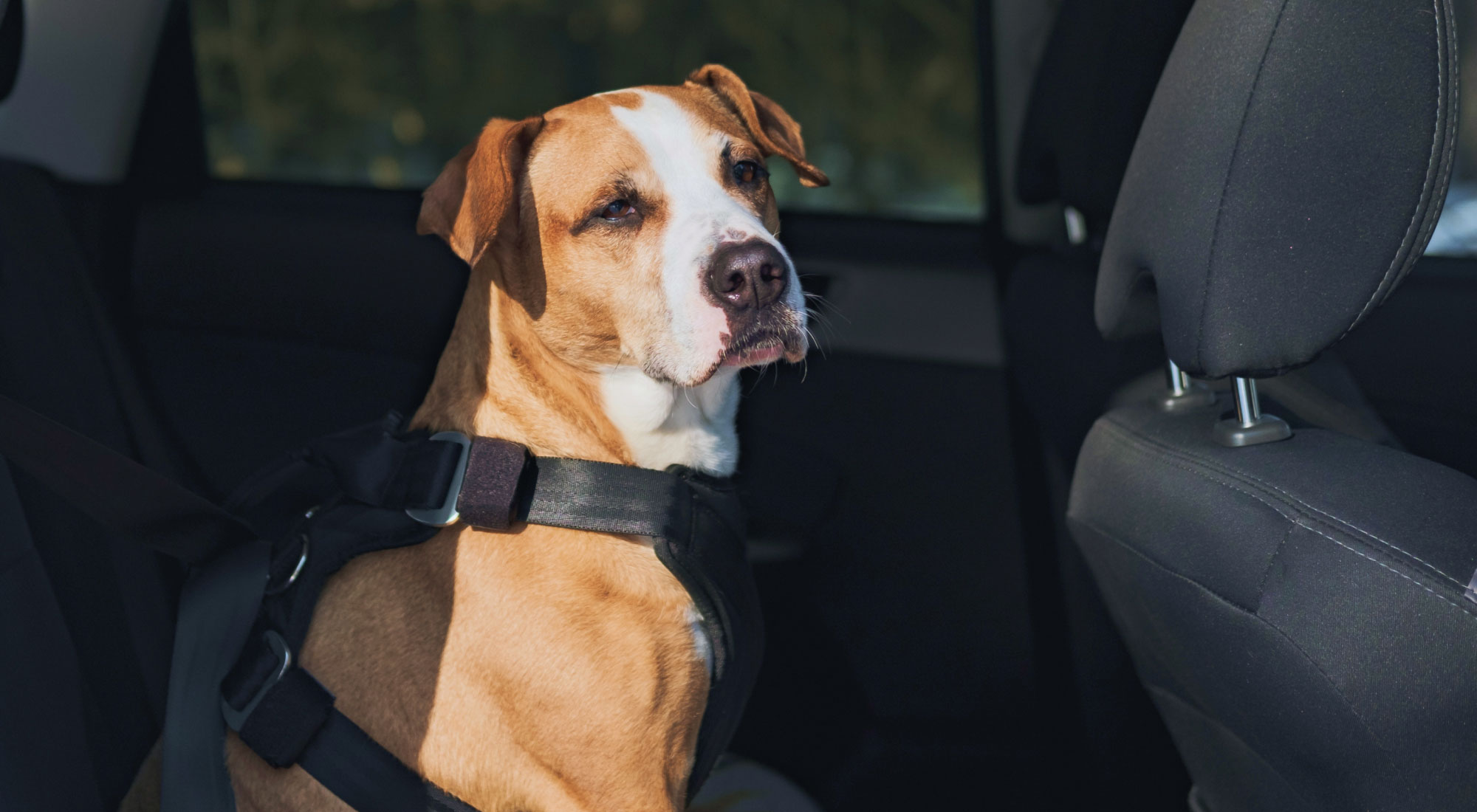
Mealtime while driving
Meal planning is another road trip essential. While we have no formal scientific evidence yet, we're pretty sure pets can get hangry just like us. But skipping meals can lead to problems that extend beyond grumbles. A dog that's used to a five o'clock dinner needs a five o'clock dinner — even if it's in a parking lot.
When humans skip meals, we're over-the-top hungry by the time the next one arrives, so we eat too fast and too much. "Same with a dog if they're missing a meal," says Pike. "Instead of chewing the proper amount, they're swallowing whole kibble and looking for more because they're not satisfied because they're over-hungry."
This can lead to an upset stomach and even vomiting. "Give them their snacks, and if it's their time to eat, make a conscious effort to make sure you feed your dog," she advises.
Toys, toys, and more toys
Toys are another backseat essential. A familiar toy will provide comfort and decrease anxiety, while a new toy can keep a bored pup entertained.
Treat puzzles and snuffle mats are great for intellectual stimulation, and can even tire your dog out more effectively than physical activity, says Melanie Krumme, a trainer at the Lions Foundation of Canada Dog Guides.
For dogs who love a good squeak session, pick up an ultrasonic squeaker plush toy — they'll hear its satisfying sound but you won't have to. And of course, chewers gonna chew so make sure they're doing that with a sturdy chew toy, instead of your car's armrest.

Be careful not to let your pet oversleep
While comfort is a key element of successful road tripping, so is the maintenance of your pet's routine. It's important that you stop your dog from oversleeping.
Just like kids, pets that sleep off-schedule will arrive at a destination with a prolonged case of the uber zoomies — coinciding perfectly with your post-drive exhaustion.
Pike says that many of the pet parents she knows travel at night if the car ride is going to be a long one. That way, their animal's sleep schedule remains intact and the zoomies don't arrive at inopportune times, like 2 a.m.
Heat can be a serious hazard
A pit stop might not feel like a long time to you, but you should avoid leaving your dog or cat alone in your vehicle.
When it's 21° C (72°F) outside, the temperature inside your vehicle can climb to 46°C (116°F) within an hour. On a day where temperatures are 30°C (85°F), the temperature inside your vehicle can reach 39°C (102°F) in just 10 minutes, even with your windows slightly open.
If possible, drive with someone else so you can share the duties of watching your pet while stopped.
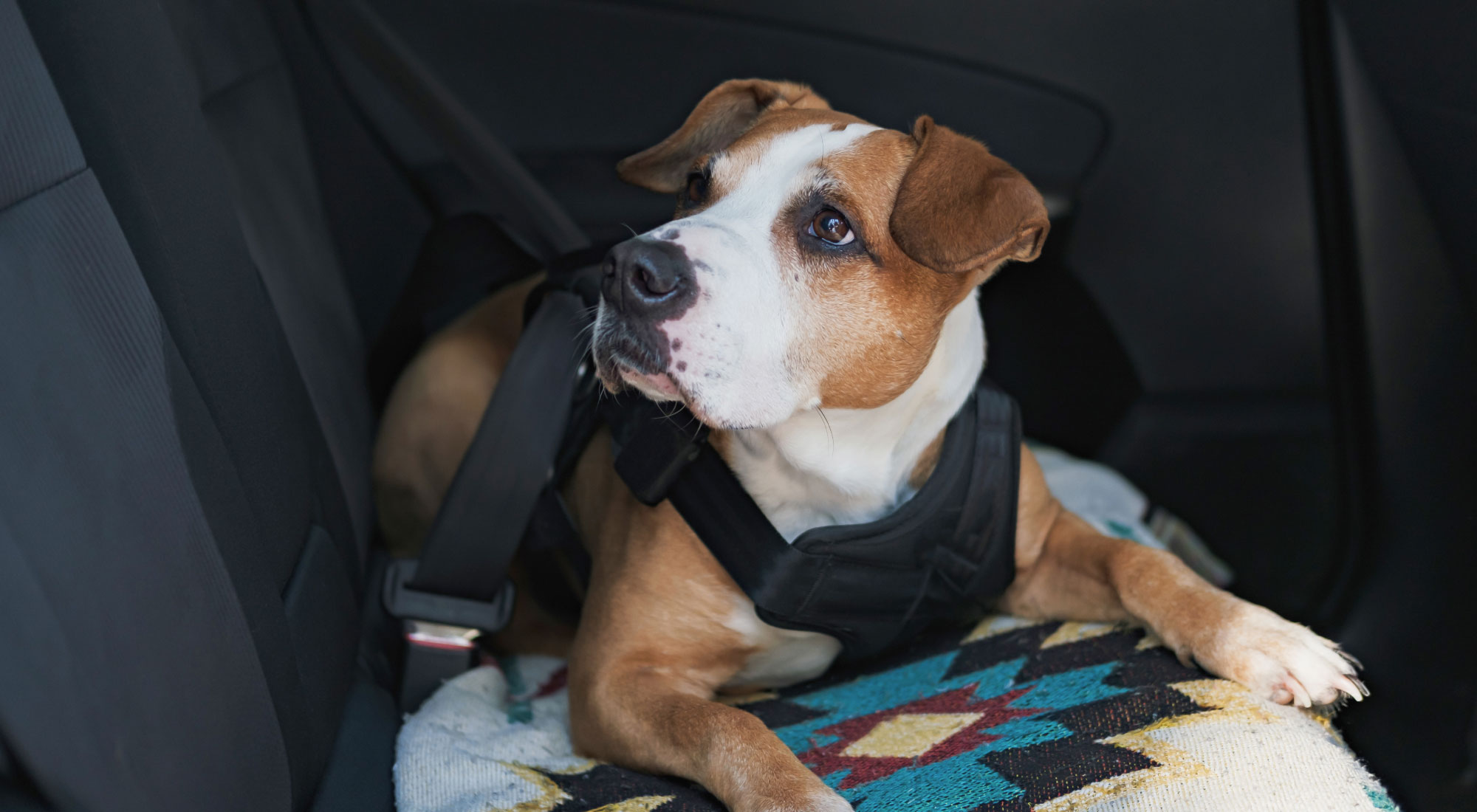
Keep calm, and travel on
A stressed out pet usually equals a stressed out driver, but there are strategies for helping your dog acclimate to road trips. It's all about baby steps (also known as conditioning).
Take advantage of opportunities to bring your pet on car rides as long before a planned road trip as you can. Puppies and kittens are typically more adaptable, and for them, a trip in the car quickly becomes no big deal, especially if you help them associate it with something positive like treats.
For a pet who's exhibiting signs of anxiety in the car (think: shaking, drooling, attempting Houdini-like feats of escape), a road trip training program can help.
Herbal remedies and prescription anti-anxiety medications are also available for pets, and may help them get used to car trips over time. Remember that chewing and licking also calm a dog down, so toys designed for those activities should be a part of your road trip de-stressing kit too.
Being well prepared will lower your stress level, and as a result, your pet's. From muddy paw prints to the occasional in-car bathroom accident, have the right equipment on-hand to deal with life's little spills. Pack extra towels, pet-safe wipes, and a bag to contain any aftermath as your road-tripping-with-pets insurance plan.
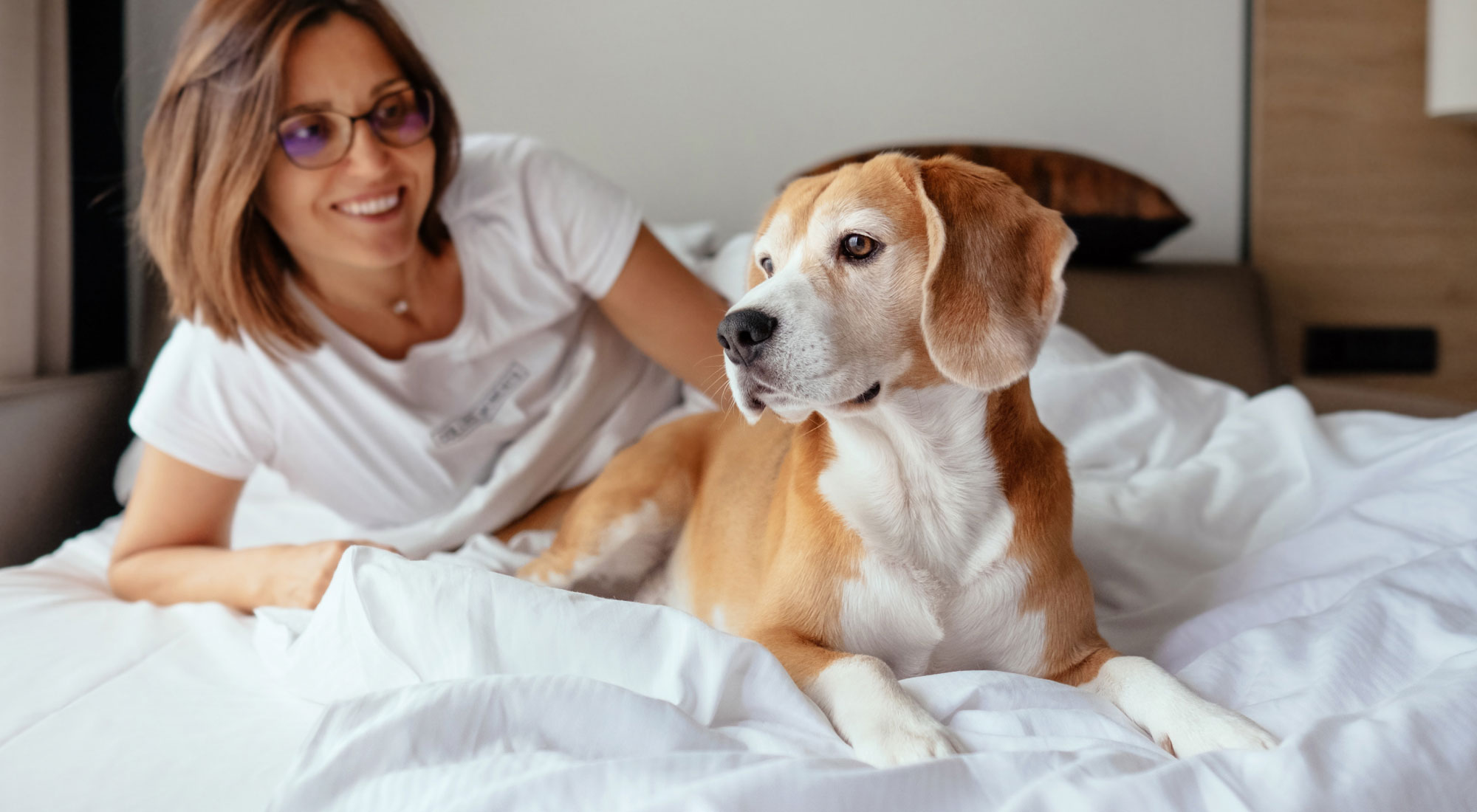
Home sweet home-away-from-home
Whether you're introducing your dog to a campsite, a cottage you found on Airbnb, or an upscale hotel room, there are a few checklist points to take care of upon arrival.
"You need to keep them feeling as if they were at home," says Pike, who says a tour of the place can help your pet get used to the new digs, including showing them where their bed is. “Some people have a travelling kit: A travel suitcase for the dog with their special treats, special blankets, and a specific bed for when they go on vacation."
Top arrival priorities include showing your dog where to find a drink and where to do their business. Making sure they know where to get water is extra important in the warmer summer months.
A trained dog is most likely going to ask to go out for bathroom breaks no matter where they are, but Pike emphasizes that it's important to stick to their familiar schedule. "If you're at a hotel and sitting there for five or six hours, your dog's going to go potty on the floor. You take your same routine at home, on the road."
A campsite can be more confusing for dogs because it's all the great outdoors (read: one giant bathroom) right? But you probably don't want your dog's preferred pee spot to be next to your cooking setup.
Take them to an area you've designated as their doggie bathroom and use positive reinforcement to communicate that it's the spot where they should conduct their business. Reward them when they get it right. YASSS, treats!

Leash training should also be a pre-trip consideration. Lots of dogs have the run of their own backyard and house at home, so spending more time on a leash might seem strange to them at first.
"Make sure that they're leash-ready," says Pike, who also recommends that campers get their dog used to a tie out for shorter periods of time when they can't be leashed.
Crating is an option for both dogs who are comfortable in that environment, but plan for those periods to be shorter than they would be at home. Your pet is still on unfamiliar territory with unfamiliar sounds and smells that can cause stress. Crates should contain their most-loved beds or blankets, toys, and of course water.
With dogs, there's always the chance that something will inspire them to bark — especially in a new setting, with intriguing and exciting new noises.
"It doesn't matter what kind of dog you have or if your dog is the perfect little dog and doesn't bark ever," says Pike, "if they hear stuff and they don't know what it is, they're gonna bark."
The best remedy for this is to explore with them for a bit, which is the whole reason we travel in the first place. "Let them get out and see and exercise and get fresh air. Dogs need fresh air just like humans do."
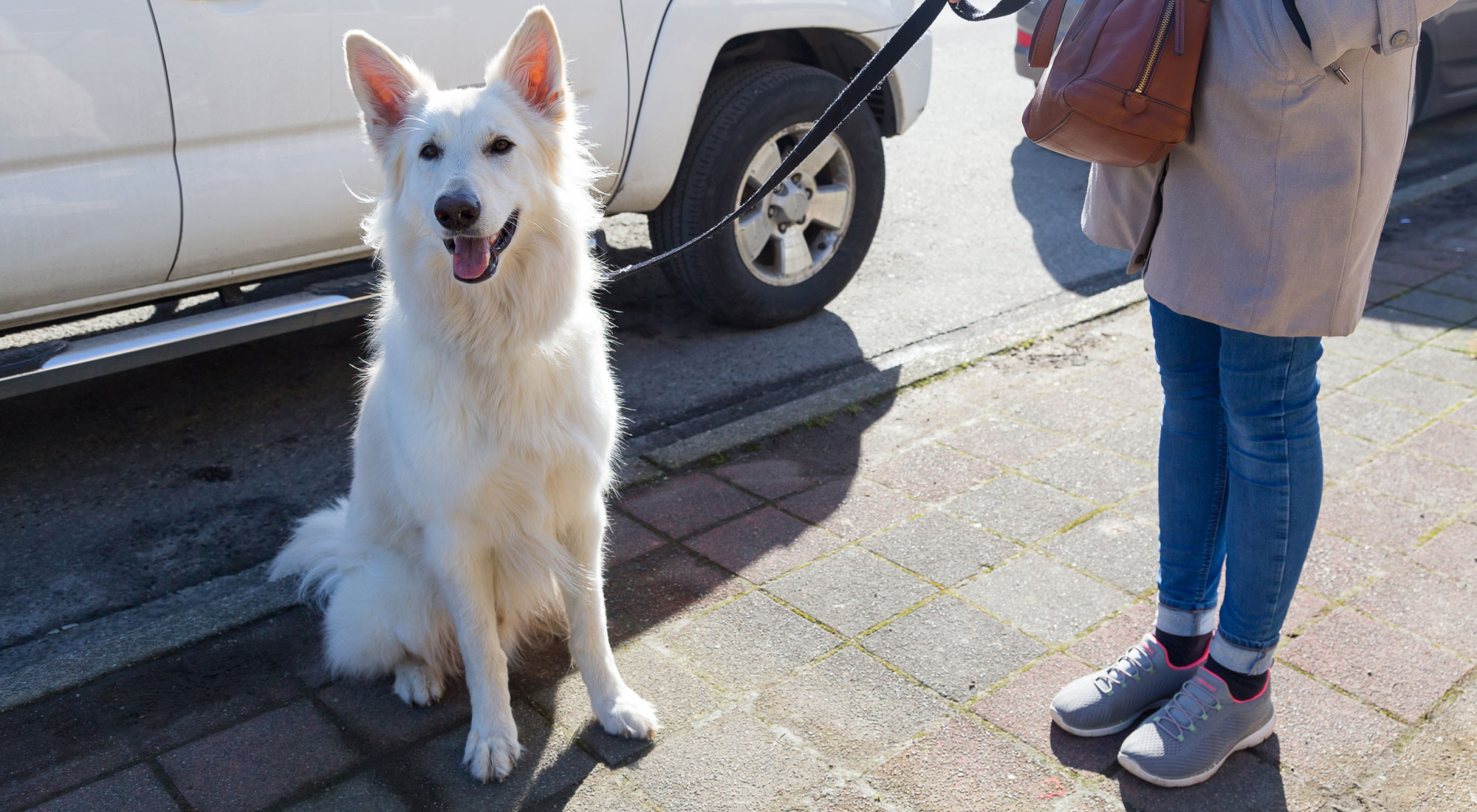
Map it out
Over time, you and your pet will collect a list of favourite destinations that feel like second homes. But in the early days of travelling together it's best to do as much destination-specific research as you can, ahead of time.
Hotels, especially, can have pet-related fees and stipulations that may not be obvious. "Check the rules before you go," Pike recommends. "Each hotel is different. Some hotels require between $50 to $150 extra in cleaning fees. Some hotels say only pets up to a certain weight are allowed."
Others, she says, are very accommodating, "They just don't want you leaving your dog in the hotel barking like a fool."
Pike recalls a fantastic weekend getaway she took with her dogs to Ontario's biggest farmer's market in Waterloo.
"We travelled quite a bit within Ontario during COVID and brought the dogs and stayed at hotels. A really nice one is in St. Jacobs right at the market," she says. "That's an awesome little weekend getaway. Bring the dogs, they treat them like kings."
Sites like Bring Fido (which also has a handy app for when you're on the road) offer up user-generated content on how dog-friendly some places are — it covers hotels, pubs, eateries, parks, shopping venues, and beaches.
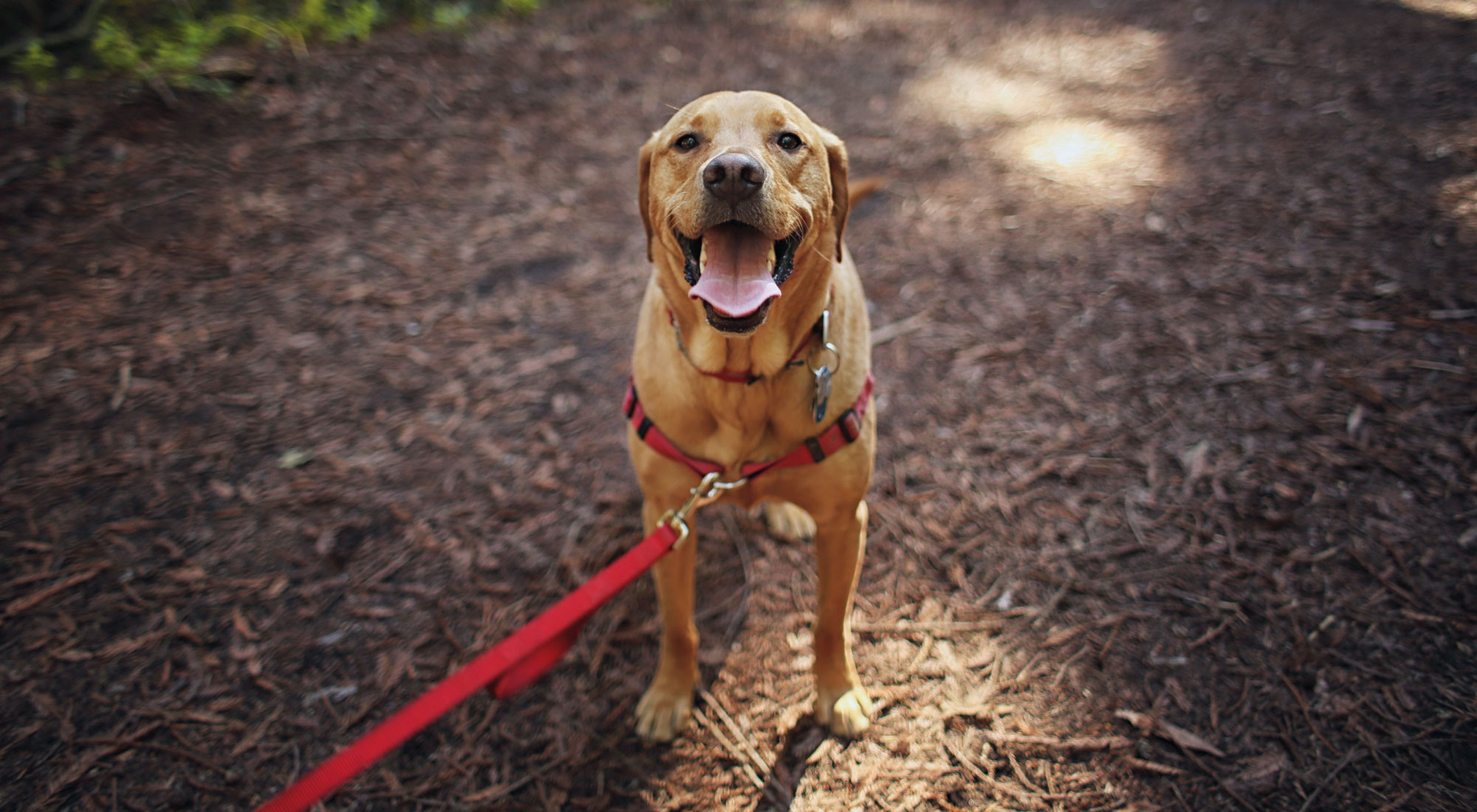
In Canada, nearly all of our national parks welcome four-legged guests as long as they're leashed.
As for those seeking a more urban vacay, off-leash dog parks are a fixture in cities across the country. There are even some with hiking trails, such as Toronto's High Park, and swimming spots like Whistler's Canine Cove in Rainbow Park.
Cultural sites and independent businesses have begun to welcome dogs more and more, as well — municipal bylaws permitting.
Brew pubs are leading the pack with dog friendly patios (some even have doggie menus) and certain major retailers have also rolled out the red carpet for dogs and their families.
The key to travelling with your pet comes down to understanding their personality.
Do they live to socialize with other dogs? Is a swim in the lake their favourite thing ever? Do crowds intimidate them? Will a fancy hotel stay have them insisting on breakfast in bed when you return home?
Taking their preferences into account should be part of the planning process but above all, don't forget to have the BEST TRIP EVER!
Suggested Articles

How to avoid all the things that can go wrong on a pet road trip
Ok, maybe it's not a completely exhaustive list, but we've covered the big stuff you want to plan for before driving off into the sunset with your pet bestie.
Read More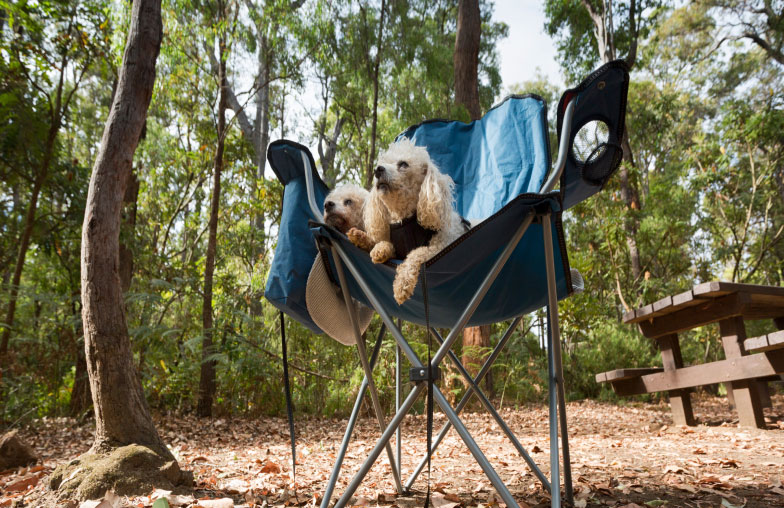
Living the wild life: How to prep for your dog's first camping adventure
There's more to prepare than you might think when heading off into the wilderness with your canine travel buddy. From packing tips to park pet rules, here's what you need to know.
Read More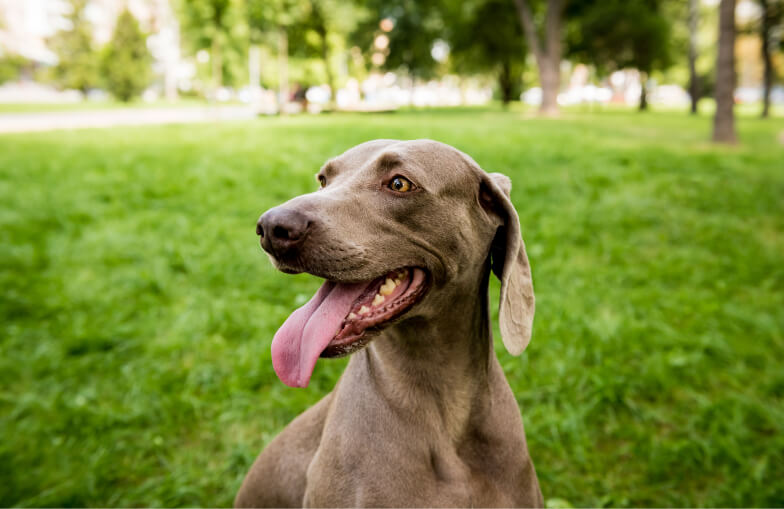
6 must-visit parks across Canada with canine appeal
Want to explore the great outdoors this summer with your dog? We asked our resident dog expert to share a list of the best spots to check out, coast-to-coast.
Read More